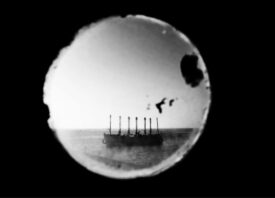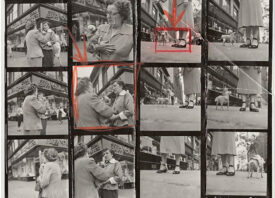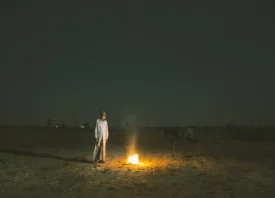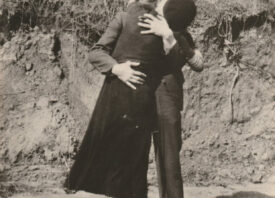Search this site
The Beat Goes On in Burt Glinn’s Photographs of a Legendary Era

A chess interlude during a break in the revelry at the Blackhawk, a night spot on the corner of Turk and Hyde Street where eminent jazz performers are often to be found in action. The player making the move here is Earl Bostic.

Writers Allen Ginsberg, Gregory Corso, and Barney Rossett,
owner of the publishing house Grove Press in Washington Square Park.

A French dancer improvising to the music at the party.
The band play with both Eastern and Western instruments.
The year was 1959 and a new generation was coming into its own in the shadows of World War II in New York and San Francisco. They dubbed themselves the Beat Generation, taking their cue from jazz, and set off on a spiritual quest that rejected the corporate enterprise that was beginning to take hold. Setting themselves apart from the squares that made 1950s a particularly dark chapter in American history, the Beats were on a quest to raise their consciousness through art, literature, music, drugs, and sex.
Enter Magnum photographer Burt Glinn who, then 33 years old, was fresh off covering the Cuban Revolution. As with all his subjects, Glinn entered the scene with ease, able to become intimately involved so that his presence was not always registered. Rather, he became the consummate observer, recording the moment so that his photographs simply show life as it occurs. And within his eye there is a profound stirring of the heart, a vast well filled with the resonant swells of energy, of emotion in motion filling the very air we breathe.
In the new book The Beat Scene: Photographs by Burt Glinn (Reel Art Press), editors Tony Nourmand and Michael Shulman have unearthed a glorious treasure trove of never-before-seen photographs Glinn made between the years 1957 and 1960 of the Beat Generation on the East and West coasts.
The photographs are accompanied by an essay by Jack Kerouac titled, “and this is the beat nightlife of new york,” which beautifully contextualized the scenes about to unfold in black and white and color work. Kerouac’s prose paints a picture of a new youth culture coming into its own, one in search of pleasure, meaning, and purpose in the world.
The Beat Scene begins in 1957 with a look at a new bohemia coming into its own. Whether at a party given by photographer Arnold Newman, inside the studios of Helen Frankenthaler and David Smith, or with artist Franz Kline at the Five Spot, Glinn introduces us to a distinctive cast of characters setting forth on a course that will plant the seeds for generations to come.
When Glinn returns to the scene in 1959, things have taken off – and he begins to document that people, places, and events with detail, depth, and exquisite nuance. Like the Beats themselves, Glinn’s eye seeks out scenes that reflect and reveal a myriad of expressions of the human condition as it is explored and understood by the quintessential hipster.
Glinn’s gift for reading expression and gesture and knowing when to strike allows us to see icons of the day, not as heroic figures but simply bone and flesh: Kerouac, Allen Ginsberg, Alan Watts, Barnett Newman, Willem De Kooning, LeRoi Jones, Gregory Corso, and more – each is shown in the moment, rarely aware of the camera. There’s tons of conversation, music, dancing, and drinks. There are books and canvases, cigarettes and berets – everything Audrey Hepburn would need to strike a Funny Face, except here there is no fantastical Hollywood extravaganza going on. It is at once infinitely simpler and more complex than fiction could ever let on.

Jay DeFeo one of San Francisco’s most successful younger artists
at work on her latest painting “Deathrose”.

Up these stairs, the entrance of the Seven Arts Coffee Gallery, climb the night-reading poets and their public. Poetry is read till the early hours of the morning.

Recording Session in MEA Studios. Vincent Delgado is playing a Japanese Shamisen. Alan Watts is reading on the and Henry Jacobs, one of the partners of MEA Is sitting inside the horn.

Beat Poet Hugh Romney reads poetry at the White Horse Tavern

Lawrence Ferlinghetti with Shigeyoshi “Shig” Murao, the manager of his City Lights Book Shop.

Up these stairs, the entrance of the Seven Arts Coffee Gallery, climb the night-reading poets and their public. Poetry is read till the early hours of the morning.
All images: © Burt Glinn / Magnum Photos



